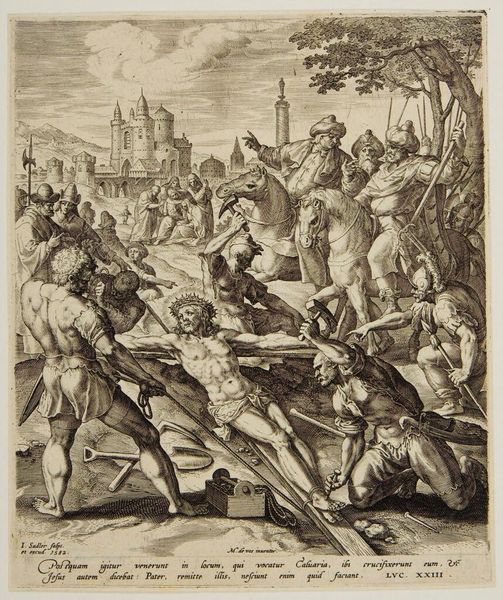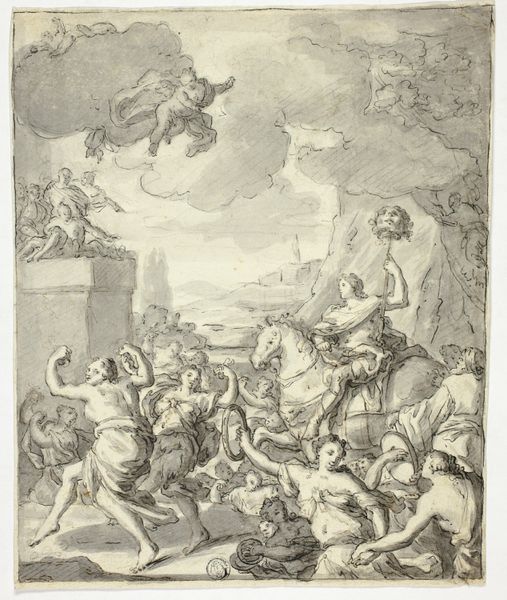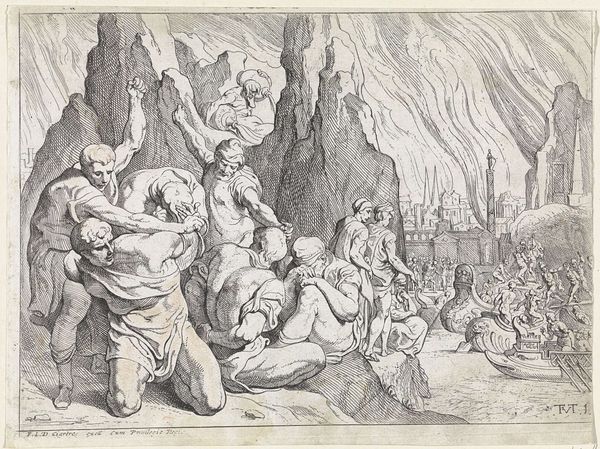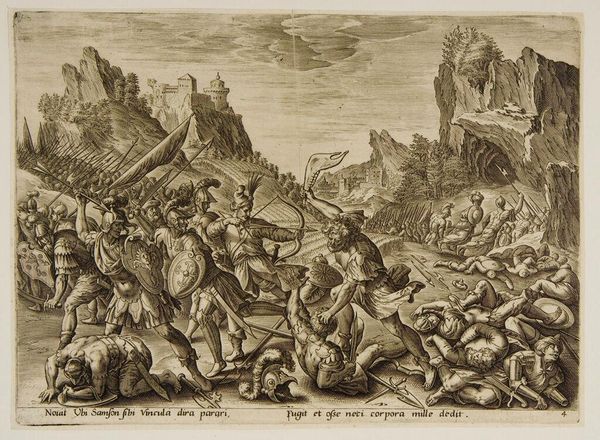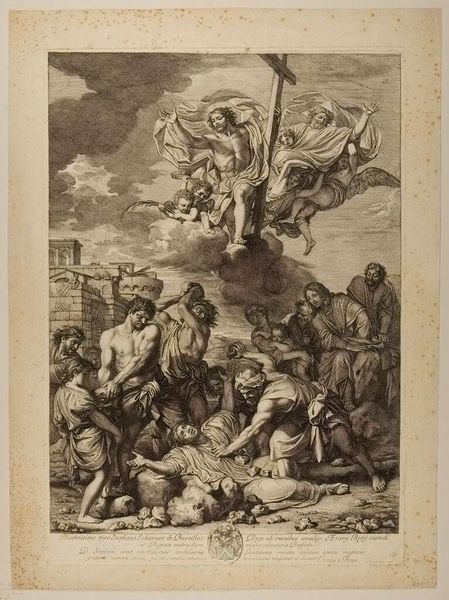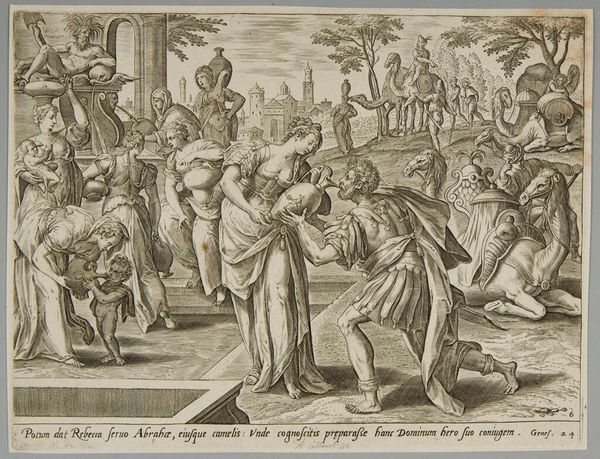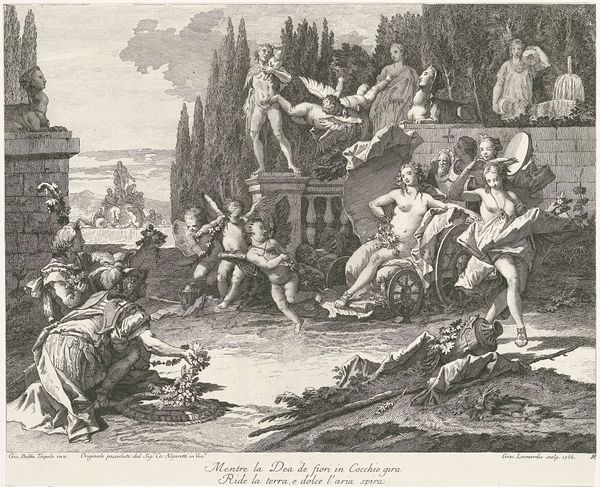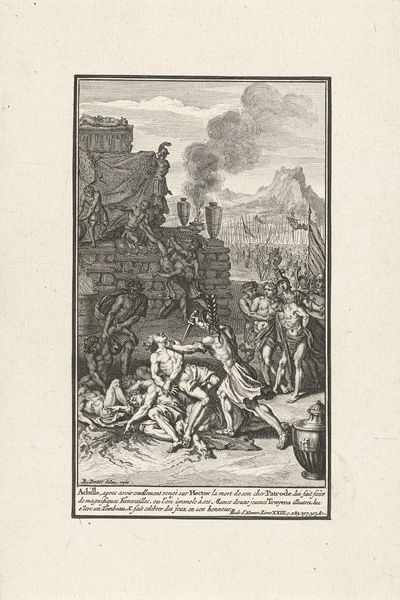
The Saving of the Infant Pyrrhus (right half) c. 1674
Dimensions: plate: 73 x 47.5 cm (28 3/4 x 18 11/16 in.)
Copyright: CC0 1.0
Curator: This is Gérard Audran's "The Saving of the Infant Pyrrhus," a striking plate measuring about 73 by 47 centimeters, currently residing at the Harvard Art Museums. Editor: The figures are so tense, almost theatrical. The composition, though, feels a bit staged, doesn't it? All the figures are directed on a single plane. Curator: Audran, like many artists of his era, was deeply invested in depicting virtue and leadership. Pyrrhus, saved as an infant, would become a celebrated leader in ancient Epirus. Editor: The rushing men, the overthrown figure in the foreground – they all suggest turmoil. Is that a broken shield? What does it symbolize? Is it the collapse of power, or the chaos of transition? Curator: Indeed. I think we can read the shield as a symbol of shattered authority, a visual cue to the precarious political landscape Pyrrhus was born into. It heightens the stakes of his rescue. Editor: It's fascinating how the visual language of this era could imbue even seemingly simple objects with such loaded significance. It truly invites reflection on the cyclical nature of power.
Comments
No comments
Be the first to comment and join the conversation on the ultimate creative platform.
